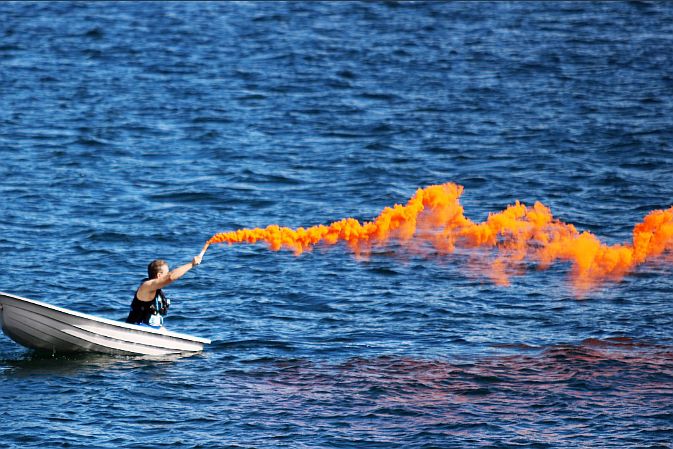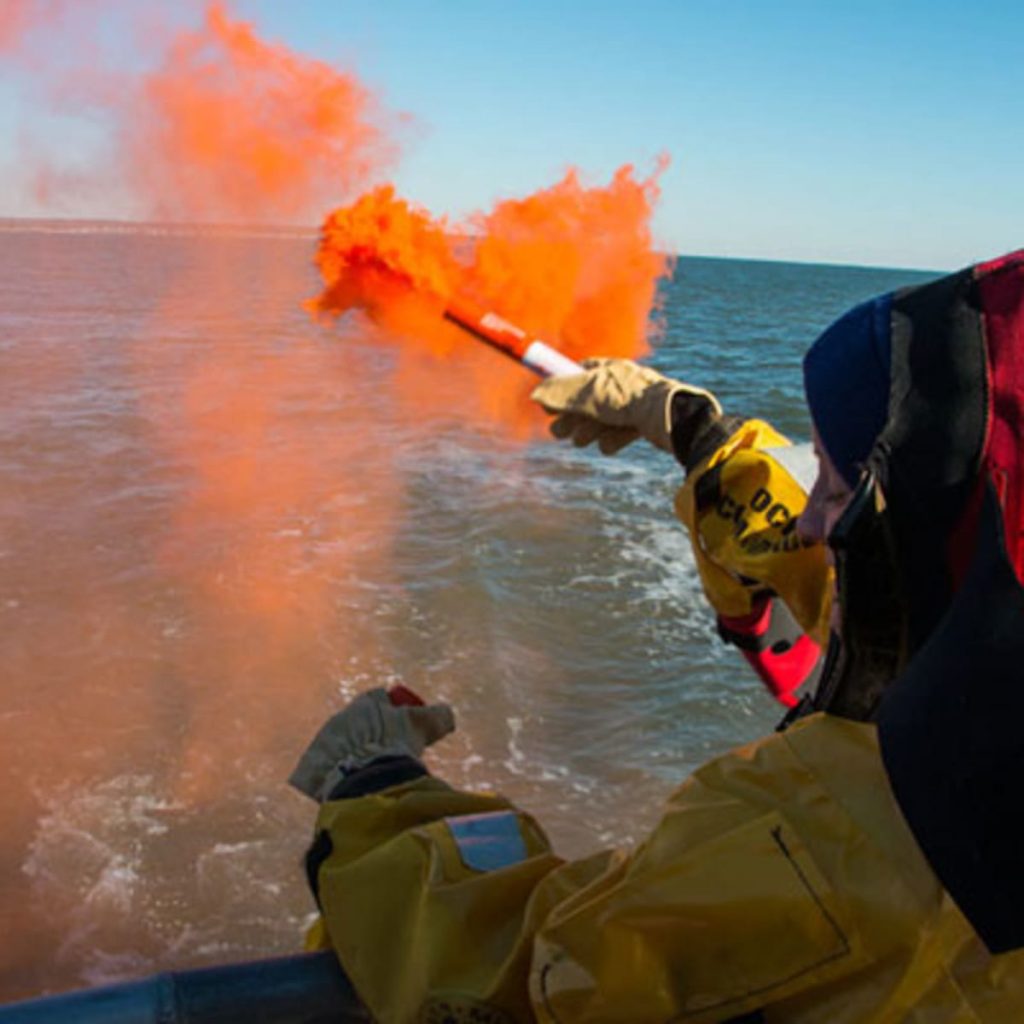Flares: Understanding Their Applications and Impact
Flares are a type of pyrotechnic device known for producing an intense bright light or heat without causing an explosion. Widely used for various applications, flares play important roles in distress signaling, illumination, and defensive countermeasures. From marine to aviation industries, these devices have proven to be an effective tool for communication and safety.

There are different types of flares available, catering to diverse needs and purposes. Signal flares, for example, emit a bright red light, while smoke flares generate large plumes of colored smoke for visibility. Flares have been adapted for various industries and situations, including transportation, safety measures, and specific medical conditions where patients may experience sudden worsening of symptoms.
Key Takeaways
- Flares are versatile pyrotechnic devices used for signaling, illumination, and defense.
- The various types of flares cater to specific needs, from signal flares to smoke flares.
- They play a vital role in numerous industries, promoting safety and communication.

Understanding Flares
Flares are devices that produce a bright light, usually in the form of red flares, that are used for various purposes such as distress signals, illumination, or as a warning. These useful tools function by burning a pyrotechnic composition, which emits an intense light as it reacts with the surrounding air. In general, flares can be classified based on their design, usage, and the type of light produced.
One common type of flare is the rocket flare, also known as a parachute flare or a 1000-foot flare. When activated, a rocket flare fires a bright red projectile to a height of 300 meters, or approximately 984-1000 feet. By reaching such a considerable altitude, these flares enable the signal to be seen from longer distances and provide greater visibility in emergency situations.

Another type of flare is the handheld flare, which is often utilized in maritime contexts to alert others to dangerous situations or request assistance. In comparison to rocket flares, handheld flares burn for a shorter duration but emit a more concentrated light. Boat owners and sailors are typically equipped with these flares to comply with safety regulations and ensure that they have an effective means of communication in case of an emergency.
It is essential to handle flares with caution, as the pyrotechnic composition can produce not only a bright light but also extreme heat. When burning, a flare generates temperatures that could cause severe burns or start a fire if not used correctly. Thus, it is crucial to follow the guidelines and instructions provided by the manufacturer to ensure safe usage.
In summary, flares are versatile tools that offer an effective means of communication or signaling, particularly in emergency situations. Whether rocket flares or handheld flares, understanding their differences and proper usage is critical to maximizing their efficacy and ensuring safety.

Types of Flares
Stress Flare
A stress flare, also known as a fusee, is a type of flare used to signal distress or emergency situations, especially in maritime environments. These flares are typically handheld devices that emit a bright, burning light,visible from a distance. When ignited, a stress flare can burn for several minutes, providing a clear visual signal for search and rescue teams or other passing vessels. They can also be used as a temporary light source in outdoor settings or to ignite other combustible materials, like a torch.
Environmental Flares
Environmental flares are specifically designed for a variety of applications, including air, marine, roadside, or industrial settings. These types of flares are often used to mitigate the impact of potential hazards, such as gas emissions. They can also serve as a visual or aerial warning for nearby individuals during emergencies or distress situations. Environmental flares can further be categorized into different types:

- Ground flares: These flares are ignited on the ground, providing a stationary light source or warning signal. They are commonly used in roadside emergencies and industrial settings as a temporary light.
- Elevated flares: Elevated flares are launched into the air to increase their visibility. They are often used in marine settings to alert nearby vessels of potential hazards or the presence of a ship in distress.
- Steam-assisted flares: Utilizing steam as a method of enhancing mixing at the flare tip, these flares are able to efficiently burn off various gases, reducing their environmental impact.
- Air-assisted flares: Similar to steam-assisted flares, air-assisted flares use air to improve combustion efficiency and decrease emissions.
In summary, flares serve various purposes in different settings, ranging from distress signals in emergency situations to environmental mitigation tools. Stress flares, such as fusees, are crucial for visibility and safety in maritime environments, while environmental flares help reduce the impact of gas emissions on the environment.

Flares and Medical Conditions
Arthritis Flares
Arthritis flares are a common occurrence for those suffering from various forms of arthritis, such as rheumatoid arthritis, osteoarthritis, and psoriatic arthritis. These flares are characterized by a sudden worsening of symptoms, including increased joint pain, swelling, stiffness, and fatigue1. During a flare, the arthritis community often experiences a significant decrease in their overall quality of life, making management of these episodes crucial for their well-being.
There are several ways to cope with arthritis flares, including medication, heat application, and seeking the guidance and support of a rheumatologist2. For example, prednisone is often prescribed in cases of severe flares to help reduce inflammation and alleviate symptoms. It's essential for individuals to consult with their healthcare provider to determine the best course of action for managing their flares.
Gout Flares
Gout is a type of inflammatory arthritis caused by high levels of uric acid in the bloodstream3. Uric acid is a natural substance produced by the body, but when levels become too high, it can crystallize and cause painful flares.
Gout flares typically manifest as sudden, intense pain, swelling, and stiffness in a joint, most commonly in the big toe4. These episodes can last anywhere from a few days to a few weeks and can severely impact daily life. Measures to reduce uric acid levels, such as diet modifications, medication, and increased water intake, can help prevent gout flares.
Lupus Flares
Lupus is an autoimmune disease that can affect multiple organ systems, including the skin, joints, and kidneys5. Flares in lupus patients are characterized by the sudden worsening of symptoms, such as joint pain, fatigue, and the appearance of a skin rash.
As with other types of flares, lupus flares can range in severity and duration. Managing lupus flares typically involves a combination of medication, rest, and regular check-ups with a healthcare provider. It's crucial for individuals with lupus to monitor their symptoms closely, as an early intervention can help prevent the further worsening of symptoms and complications associated with this condition.

Flares in Transportation
Aircraft Flares
Aircraft flares serve as a crucial countermeasure for both civilian and military planes and helicopters. They are designed to defend aircraft against infrared homing ("heat-seeking") surface-to-air missiles or air-to-air missiles. These flares emit intense heat and light, consequently distracting the heat-seeking sensors of the incoming missile and ensuring the safety of the aircraft.
In addition to defense purposes, flares also provide some level of illumination benefits for aircraft during nighttime operations or in low visibility situations. Their bright light can aid pilots in identifying terrain and potential obstacles, thus enhancing operation safety.

Train Flares
Unlike aircraft flares, train flares play a different role in the realm of transportation. Train flares primarily focus on emergency signaling and enhancing visibility. Often found in emergency kits on passenger trains, train flares can be utilized by train operators and passengers in distress to notify others about an incident on the tracks.
In this regard, the flares act as a readily available visual aid to grab the attention of nearby observers, which subsequently prompt them to respond to the emergency. For example, handheld and rocket flares found on trains can produce intense, bright light that can be detected from a considerable distance.
Overall, the implementation of flares in transportation systems, such as aircraft and trains, provide essential safety and visibility measures. Their unique applications for illumination, emergency signaling, and defensive countermeasures significantly contribute to ensuring a secure and efficient transportation experience.

Flares in Language
Chinese Context
In the Chinese language, the concept of flares can be found in both Simplified and Traditional Chinese scripts. Flares, as a phenomenon of burning brightly, can be used to convey various ideas and emotions across different contexts. In Chinese culture, flares hold a wider significance and can be symbolic of passion, energy, and transformation.
Bilingual Dictionaries
For those studying the Chinese language, understanding the meaning of "flares" in various contexts might require the assistance of bilingual dictionaries. These dictionaries often provide translations between Chinese (Simplified and Traditional) and other languages such as English, Korean, and Japanese. There are also semi-bilingual dictionaries that offer translations between Chinese and specific languages. Bilingual dictionaries are vital tools for language learners, helping them grasp the nuances of Chinese expressions related to flares.
To correctly interpret the meaning of flares in the Chinese language, it is essential to consider the cultural and linguistic context. As language learners explore the world of Chinese and its complexities, recognizing the significance of flares in different contexts will help better understand the rich tapestry of the language and its expressions.
Common Flare Triggers and Management
In managing flares, it is essential to understand the common triggers and apply appropriate management techniques. Flares can be caused by various factors, including stress, physical activity, and environmental changes. Successfully managing these triggers can substantially improve an individual's quality of life.
Rest and Relaxation
One of the most critical aspects of managing flares is ensuring adequate rest and relaxation. It is important to listen to your body and take breaks when needed, as overexertion may exacerbate symptoms. According to Verywell Health, common methods of managing flares include rest and avoiding stress.
Incorporating stress management techniques into daily routines can help minimize the risk of flares. As Dr. Maggie Yu highlights, psychological and emotional stressors can significantly impact the immune system and trigger flares. Examples of stress management techniques include:
- Deep breathing exercises
- Meditation
- Progressive muscle relaxation
- Yoga
Additionally, maintaining healthy sleep patterns is crucial in managing flares, as lack of sleep is a prominent trigger for conditions like fibromyalgia, according to Medical News Today.
Heat Application
Another effective management technique is applying heat to the affected area. Heat therapy increases blood flow, relaxes muscle tissue, and reduces pain. Applying heat can come in several forms, such as using hot packs, taking warm baths, or utilizing heated blankets.
Compression sleeves and arthritis gloves can also be beneficial in managing pain and aiding mobility during flares, as they help to relieve pressure on affected joints. Similarly, the application of heat in combination with these non-invasive aids can further assist in reducing discomfort and inflammation during flare-ups.
It is essential to monitor and adapt your daily routines to manage the triggers and symptoms of flares effectively. By incorporating these strategies, such as rest, relaxation, sleep, and heat application, individuals can better manage their flares and maintain a higher quality of life.

Flares and Safety Measures
Flares are widely used in various industries, such as oil and gas, wastewater treatment plants, distilleries, landfill sites, and on-shore shale gas exploration sites. These devices help to safely burn excess gases, preventing the release of unburned hydrocarbons to the atmosphere 1. Since flares contain bright light and sometimes produce red flares, safety measures must be considered to minimize potential hazards.
It is crucial for companies operating flares to invest in emergency planning and preparation. This includes establishing procedures for situations where flares might not function correctly 2. Moreover, regular maintenance checks and routine inspections should be performed to ensure that the flares are in good working condition.
In addition to flare functionality, worker safety is of utmost importance. Personal protective equipment (PPE) must be worn by employees working in proximity to flares. Items such as helmets, safety goggles, and heat-resistant gloves should be provided to prevent injuries from the intense heat and bright light generated by flares.
It is also essential to have proper medication and first aid supplies readily available in case of any accidents. This may include burn care ointments, pain relief medications, and eye rinses for potential exposure to bright light. Furthermore, workers should be trained in first aid procedures, ensuring prompt and appropriate care in case of injury.
Flares should be accompanied by appropriate signage to indicate hazardous areas, alerting workers and visitors to the risk of intense heat and light. Blocked or restricted access to specific zones may also be necessary to maintain safety.
In conclusion, maintaining proper safety measures around flares is essential for both functional and worker safety. By implementing emergency plans, regular maintenance, appropriate PPE, and making first aid supplies available, industries can better ensure the safety of employees and the efficient operation of their flare systems.

Frequently Asked Questions
How do hand held flares work?
Handheld flares work by igniting a pyrotechnic compound that produces a bright, intense light. When the compound burns, it creates heat that vaporizes metal salts, which then emit highly visible light. The high temperature ensures the flare stays lit, even in difficult weather conditions, making them an essential tool for distress signals and emergency situations.
What are the different types of signal flares?
There are several types of signal flares, each with its own purpose and functionality. Some common types include:
- Handheld flares: Designed to be held in hand and produce bright light visible for miles.
- Parachute flares: Launched into the air where they deploy a parachute, allowing the flare to descend slowly, providing prolonged visibility.
- Smoke flares: Emit colored smoke to signal distress or indicate position during daytime hours.
- Pen flares: Small, compact flares fired from a pen-like launcher, typically used for personal distress signaling.
For marine applications, flares may be classified as red, orange, or white, depending on their intended use and visibility requirements.
Where can I buy marine flares?
Marine flares can be purchased at boating supply stores, outdoor retailers, or online. It is essential to ensure that the flares you purchase meet the requirements and regulations for your specific boating activity. The BoatUS Foundation provides useful information on selecting the right flares for your needs.
How do flares function in medical terms?
In medical terms, a flare refers to a sudden worsening of symptoms related to an underlying chronic condition, such as arthritis or lupus. During a flare, symptoms may become more severe, causing increased pain, discomfort, and inflammation. Flares can be triggered by various factors, including stress, infections, or changes in weather. The Arthritis Foundation offers detailed information on recognizing and managing flares in individuals with arthritis.
What are the uses of road flares?
Road flares serve as visual alerts to oncoming drivers, notifying them of potential hazards, accidents, or blocked roads ahead. They can be either traditional highway flares that emit bright light and smoke or modern LED flares that produce flashing lights in various colors. The Pi-Lit website provides more information on the different types of road flares and their usage.
Are solar flares harmful to Earth?
Solar flares are powerful bursts of radiation released by the Sun. While they pose no direct harm to humans on Earth's surface, their effects can impact our planet's atmosphere and electromagnetic field. Solar flares can cause disturbances in Earth's magnetic field, potentially leading to disruptions in communication networks, satellite operations, and power grids. For further information on solar flares and their impact on Earth, visit the NASA Solar Storm and Space Weather FAQ.
Footnotes
- https://www.ncbi.nlm.nih.gov/pmc/articles/PMC6859633/ ↩ ↩2
- https://www.arthritis.org/health-wellness/healthy-living/managing-pain/pain-relief-solutions/what-is-a-flare ↩ ↩2
- https://www.mayoclinic.org/diseases-conditions/gout/symptoms-causes/syc-20372897 ↩
- https://www.arthritis.org/diseases/gout ↩
- https://www.lupus.org/resources/what-is-lupus ↩
Charlie is Editor-in-Chief of Sea Magazine